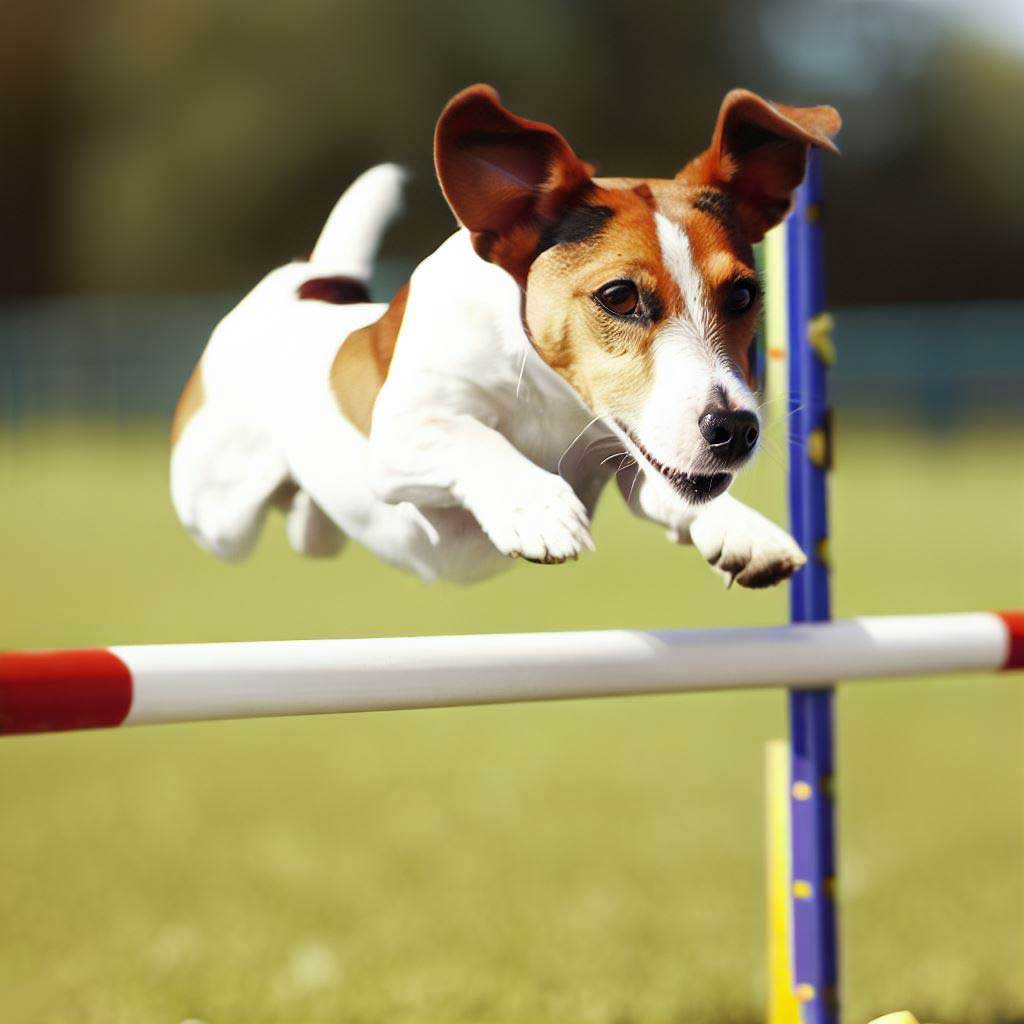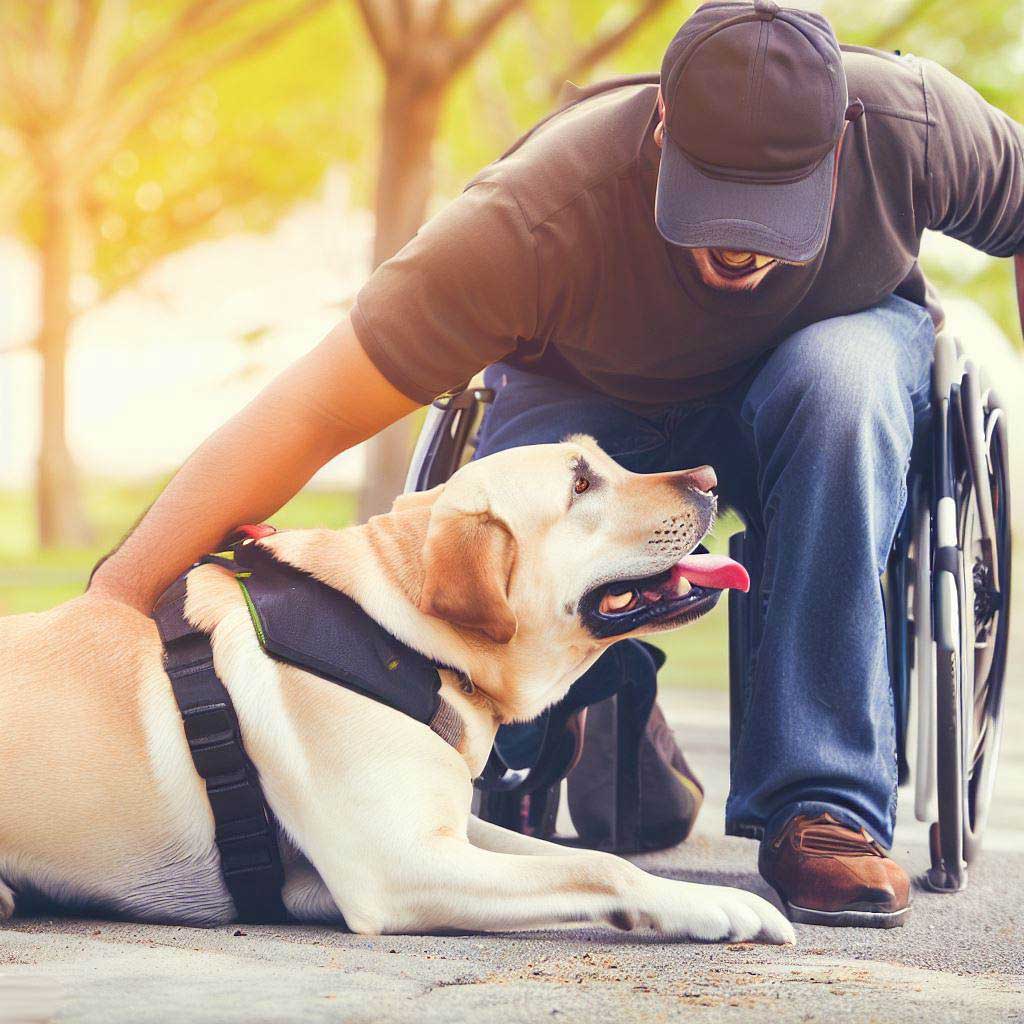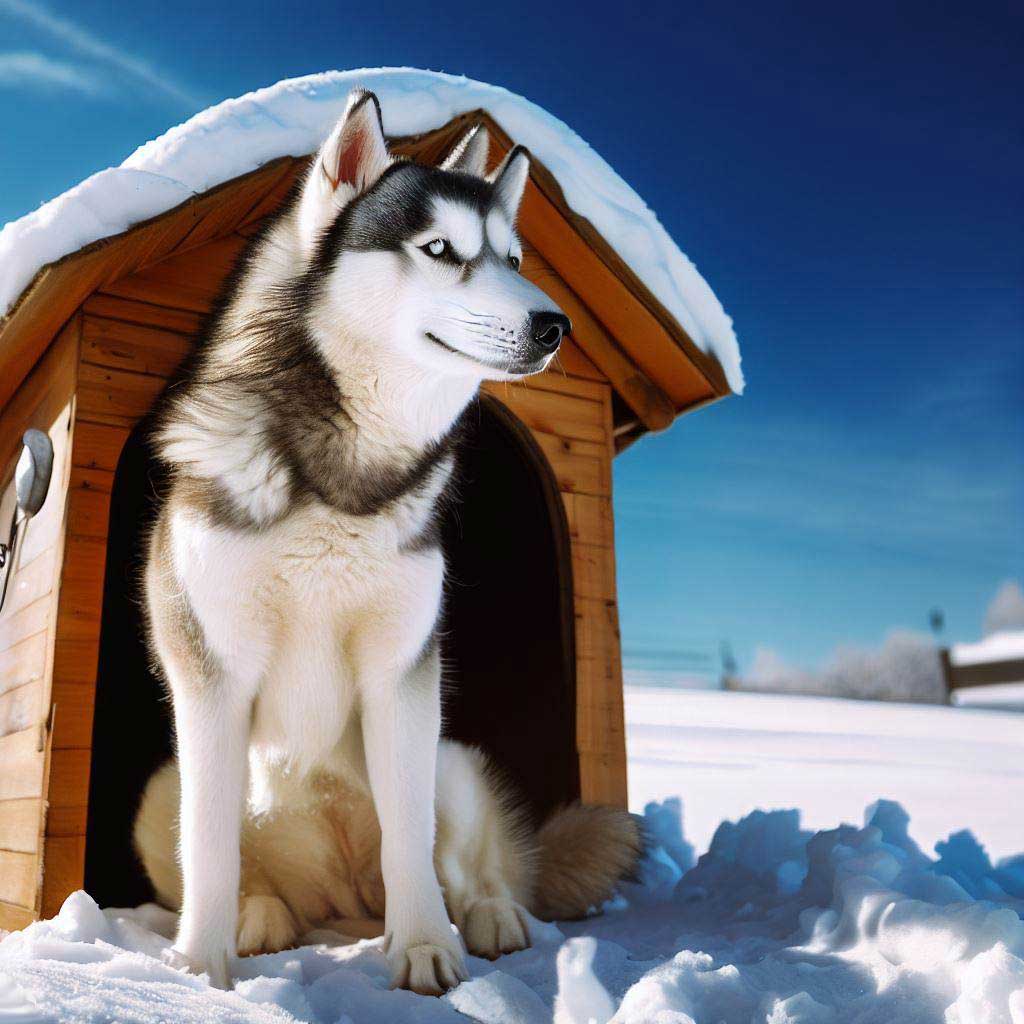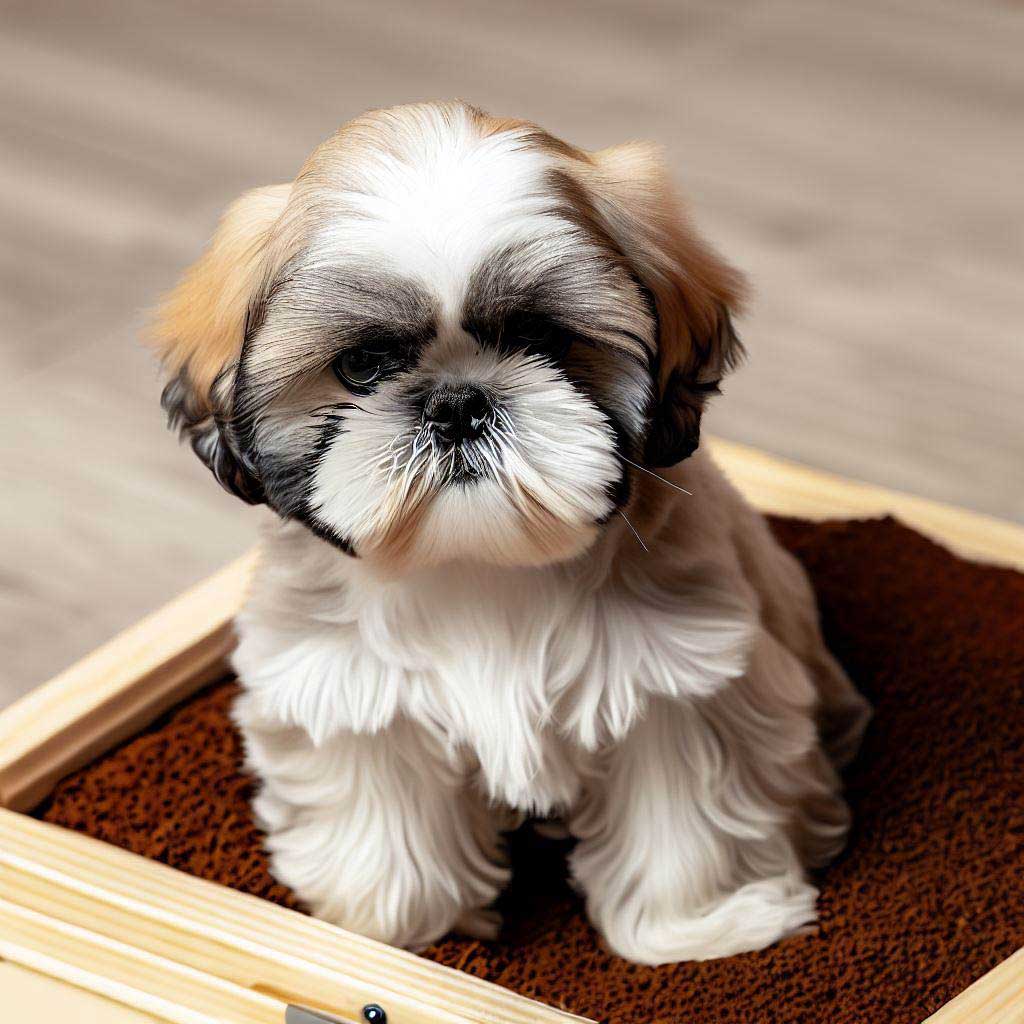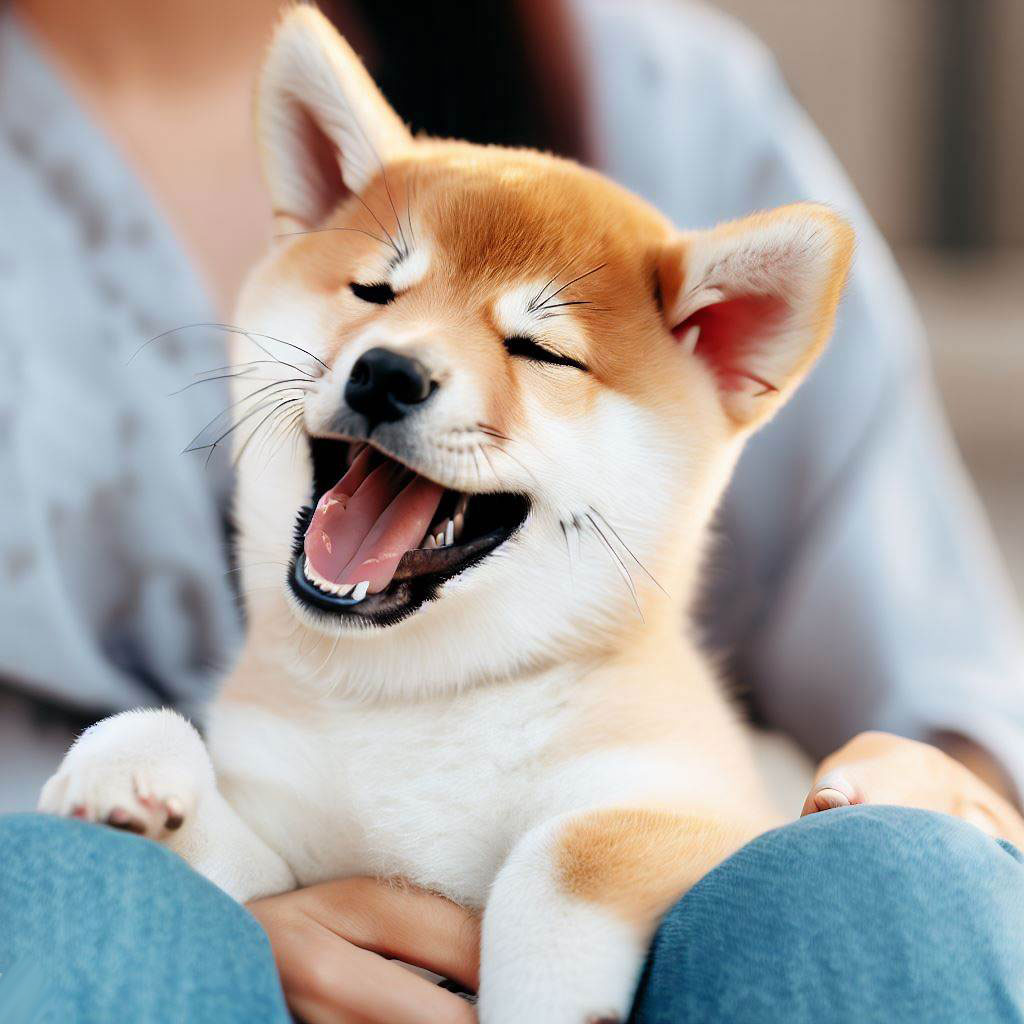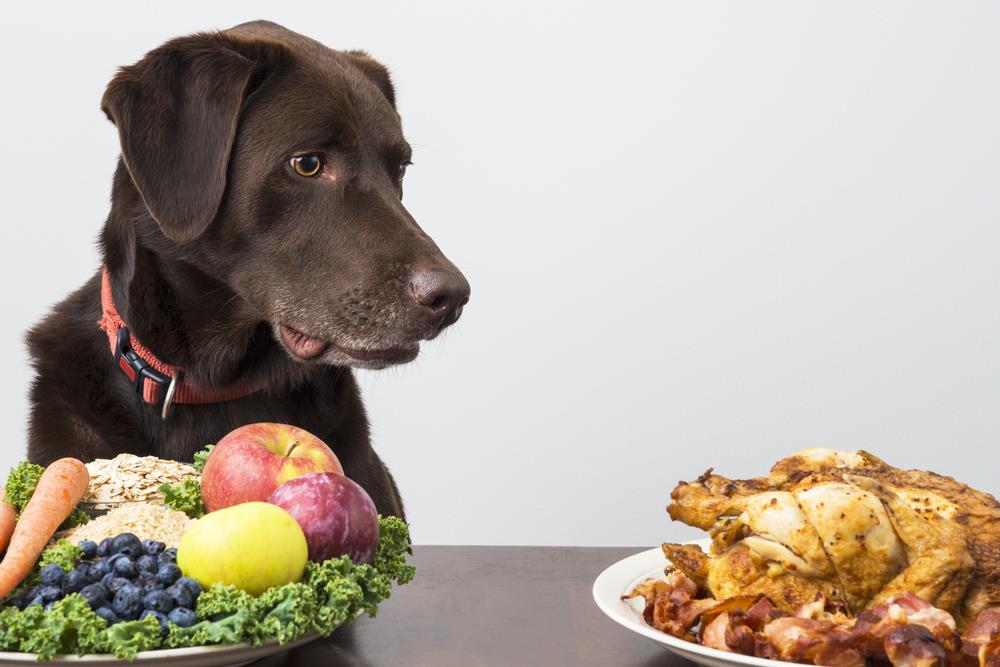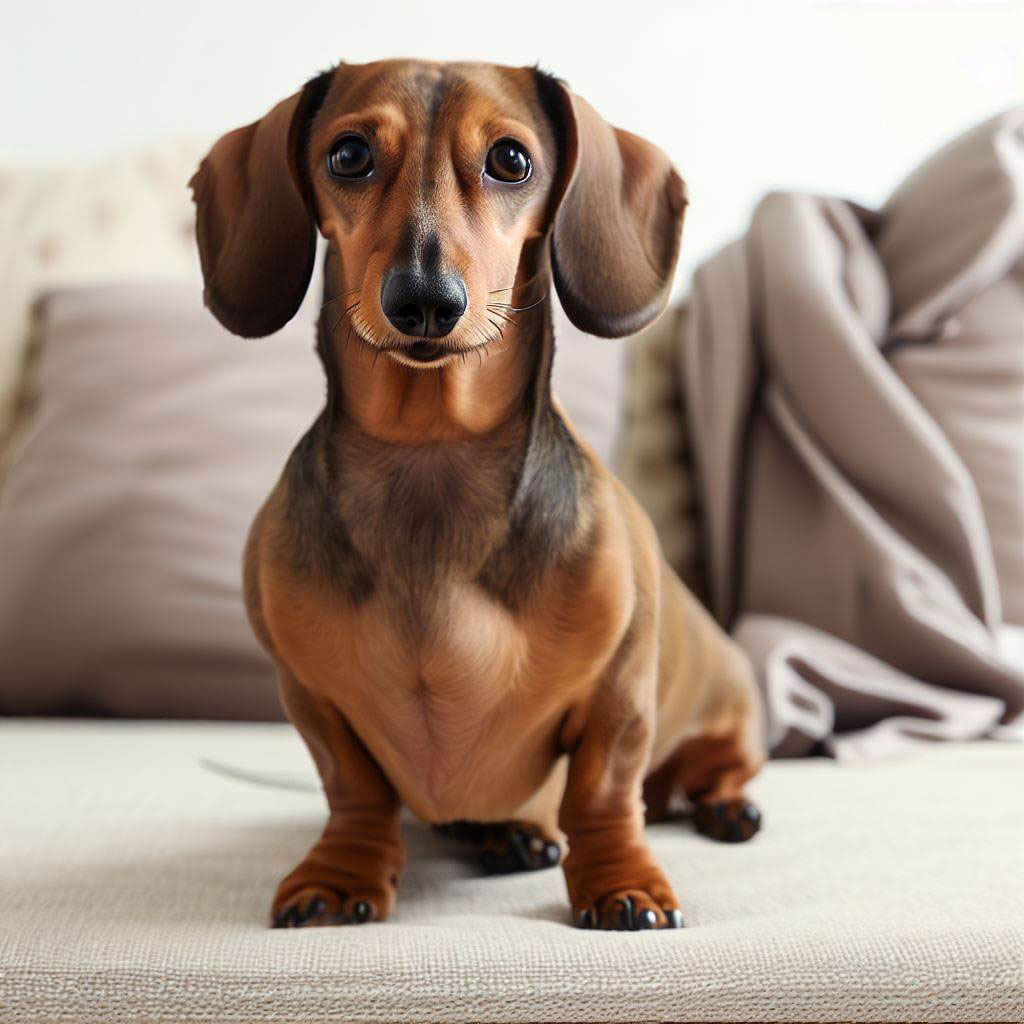Table of Contents
ToggleWhat Are The Best Dogs For Flyball?
The top 3 best dogs for flyball are:
- Border Collie
- Australian Shepherd
- Belgian Malinois
But is that it? What about all the other breeds? And who has determined that these are the top 3 breeds? Well, read on because you’re right, theres more to it than just popularity.
So are you ready to delve into the exhilarating universe of Flyball? This fast-paced dog sport brings together speed, agility, and teamwork, making it a thrilling experience for both dogs and their handlers. In this post, we’ll unveil the exciting world of Flyball and introduce you to the ideal canine partners that shine in Flyball competitions.
Explaining the Exciting World of Flyball
Flyball isn’t just a sport; it’s a dynamic showcase of dog athleticism and camaraderie. Picture a relay race where teams of four dogs each dash over hurdles, trigger spring-loaded boxes, and eagerly retrieve tennis balls. The challenge? Swiftly navigate the course, perform flawlessly, and work in sync with teammates. Flyball demands a unique blend of agility, intelligence, and boundless enthusiasm.
At its core, Flyball is about celebrating the incredible bond between dogs and their handlers. The excitement in the air is palpable as teams race side by side, with dogs showcasing their speed and precision, and handlers cheering them on. The rush of adrenaline, the thunder of paws, and the joy on dogs’ faces make Flyball an event like no other.
The Perfect Canine Partners for Flyball Competitions
Now, let’s meet the stars of the show, we mentioned three of the top breeds already above – the best of the best dogs for Flyball. These breeds have the innate qualities that align perfectly with the sport’s requirements:
- Border Collie: A dog renown for their intelligence and agility, Border Collies excel in the high-energy atmosphere of Flyball. Their quick thinking and ability to respond to commands swiftly make them ideal contenders.
- Australian Shepherd: An energetic and versatile dog, Australian Shepherds thrive in the fast-paced world of Flyball. Their natural agility and boundless energy ensure they’re always up for the challenge.
- Belgian Malinois: With their strong work ethic and determination, Belgian Malinois is a dog that gives their all in Flyball competitions. Their drive to perform and please their handlers sets them apart.
- Jack Russell Terrier: Despite their small stature, a Jack Russell Terrier dog is big on energy and enthusiasm. Their agility and speed make them a natural fit for the Flyball course.
- Whippet: These sleek speedsters are built for sprinting, making them perfect for Flyball’s quick dashes over hurdles. Their effortless grace and lightning-fast reflexes are a sight to behold.
As you explore the world of Flyball, keep in mind that finding the right dog is key to win club competitions. Each dog breed brings its unique strengths and qualities to the sport, making Flyball a dynamic and diverse playground for canine athletes. Whilst the above five dog breeds are our Top 5 (best of the best), in our opinion, next is our expanded list of the Top 13 Best Dogs for Flyball Competitions.
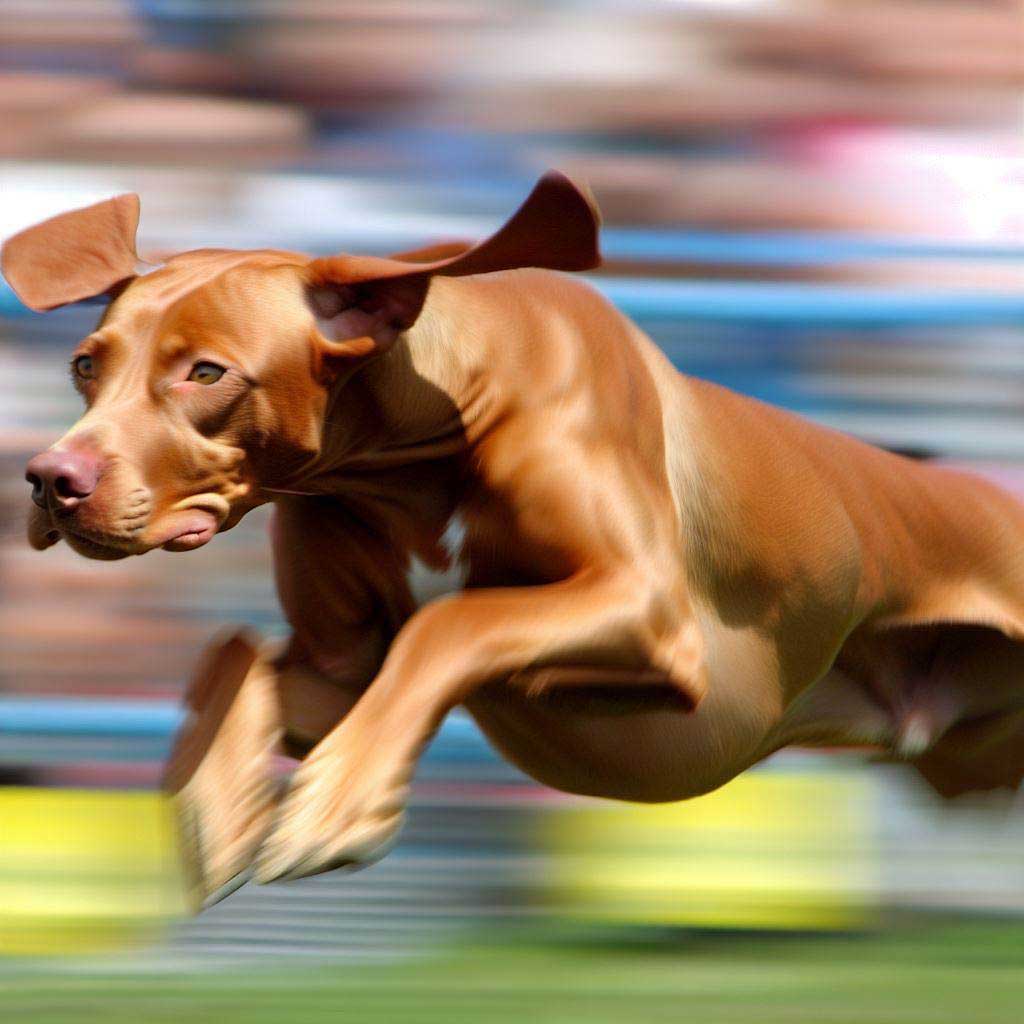
Top 13 Best Dog Breeds for Flyball
Border Collie
- Intelligence and Agility in Action: The Border Collie is the epitome of intelligence and agility, embodying the essence of Flyball. Their sharp minds and lightning-fast reflexes make them a perfect match for the high-energy demands of this dog sport. Border Collies excel at processing commands swiftly, ensuring they trigger the spring-loaded box and retrieve the ball with precision.
Australian Shepherd
- Energetic and Versatile Athlete: When it comes to Flyball, the Australian Shepherd is a standout performer. Their boundless energy and versatile athleticism make them an asset to any Flyball dog team. Australian Shepherds not only excel in agility but also showcase remarkable speed, allowing them to breeze through the course and return with the ball in record time.
Belgian Malinois
- Strong Work Ethic and Determination: The Belgian Malinois brings unwavering determination to the Flyball arena. Their strong work ethic and exceptional focus make them ideal candidates for the high-intensity nature of the sport. These dogs thrive on challenges and consistently give their all, ensuring they complete the course swiftly and accurately.
Jack Russell Terrier
- Small Stature, Big Energy: Don’t underestimate the power of the Jack Russell Terrier on the Flyball course. Their small stature belies their immense energy and enthusiasm. With lightning-fast movements and agile jumps over hurdles, these terriers are quick and agile contenders, making Flyball a thrilling experience.
Whippet
- Sleek Speed Machines: Whippets are the sleek speed machines of Flyball. Their lean physique and natural athleticism allow them to reach incredible speeds with ease. These graceful sprinters effortlessly navigate the course, triggering the box and racing back with the ball, leaving everyone in awe of their agility.
Staffordshire Bull Terrier
- Tenacity and Drive: The Staffordshire Bull Terrier possesses remarkable tenacity and drive, making them a force to be reckoned with in Flyball. Their muscular build and unwavering determination contribute to their success. These enthusiastic competitors thrive in the lively atmosphere of Flyball competitions.
Labrador Retriever
- Balance of Power and Retrieval Instincts: The Labrador Retriever’s balanced nature makes them an excellent Flyball dog. Their power and agility, combined with their natural retrieval instincts, set them up for success. These friendly and cooperative dogs work harmoniously with their handlers, making them valuable assets in the Flyball team dynamic.
Shetland Sheepdog
- Compact Agility Dynamo: Shetland Sheepdogs may be compact dogs, but they are agile dynamos on the Flyball course. Their size allows them to swiftly clear hurdles and maneuver around the track. Their surprising speed and agility make them true contenders, impressing everyone with their performance.
Papillon
- Tiny But Mighty: The Papillon, though tiny, is mighty in the world of Flyball. Their small size allows them to navigate the course with finesse, while their high energy levels ensure they complete the race swiftly. Papillons’ intelligence and eagerness to please contribute to their graceful and spirited Flyball performances.
Vizsla
- Elegance and Speed Combined: Vizslas bring an elegant flair to Flyball with their graceful movements and remarkable speed. Their endurance and determination make them strong contenders in the dog sport. Vizslas’ ability to combine elegance with power makes them stand out on the Flyball course.
Australian Cattle Dog
- Endurance and Determination: The Australian Cattle Dog’s endurance and determination are unmatched, making them excel in the challenges of Flyball. Their strong bond with their handlers and their focused demeanor ensure they tackle the course with precision and speed.
Border Terrier
- Compact and Energetic: Border Terriers may be small in stature, but their energy knows no bounds. Their compact build and lively nature translate into impressive agility on the Flyball dog course. These terriers surprise everyone with their speed and determination, embodying the spirit of the sport.
Belgian Tervuren
- Intelligence and Grace: A Belgian Tervuren dog brings intelligence and grace to Flyball competitions. Their precise movements and quick thinking allow them to navigate the course with finesse. Their strong work ethic and ability to adapt to different challenges make them valuable assets in any Flyball team.
Conclusion: Best Dogs For Flyball
Finding Your Perfect Flyball Partner
Discovering the ideal canine pet dog companion for Flyball is an exciting journey. As you explore the world of Flyball, consider the traits and characteristics that align with the sport’s demands. The top 13 breeds highlighted in this article offer a diverse range of qualities, ensuring there’s a Flyball star for every handler.
Choosing the right dog for Flyball involves a combination of understanding the breed’s natural abilities, temperament, and your own training capabilities. While some breeds excel in agility and speed, others bring a strong work ethic and determination to the table. Finding the right fit will not only enhance your team’s performance but also deepen the bond between you and your furry pet teammate.
Nurturing the Bond Through Sport
Flyball is more than just a sport – it’s a platform for building a strong bond with your canine partner. Training and competing together create opportunities for communication, trust, and teamwork. As you embark on this journey, remember that Flyball is about celebrating the unique qualities of your chosen dog breed while fostering a sense of unity within your team.
Engaging in Flyball provides mental and physical stimulation for your dog, allowing them to channel their energy and intelligence into a positive outlet. The training process enhances obedience and responsiveness, enriching your relationship beyond the Flyball course. Whether your dog is a great natural Flyball champion or needs some time to hone their skills, the journey itself is an enriching experience.
As you nurture your bond through Flyball, you’ll witness the transformation of your pet dog into a dedicated athlete, eager to participate and excel. The cheers of the crowd, the camaraderie with fellow handlers, and the exhilaration of competition will become cherished memories that strengthen the connection between you and your four-legged partner.

FAQ: Best Dogs For Flyball
What is Flyball and why is breed selection important?
Flyball is an exhilarating canine sport that involves teams of dogs racing over hurdles to trigger a spring-loaded box that releases a tennis ball. The breed selection is crucial as certain breeds possess the traits required for Flyball’s fast-paced nature, including agility, speed, and a strong work ethic. Finding a breed suited for the sport ensures an enjoyable and competitive experience.
What traits make a pet dog suitable for Flyball competitions?
Pet dogs suitable for Flyball should exhibit agility, speed, intelligence, and a strong desire to please their handlers. Quick reflexes, the ability to follow commands, and enthusiasm for fetching and running are essential qualities. Breeds with these traits excel in Flyball, demonstrating their aptitude for the sport.
Are smaller breeds as competitive as larger ones in Flyball?
Absolutely. Flyball values agility and speed over size. Many smaller breeds, such as Jack Russell Terriers and Papillons, possess exceptional agility and energy levels that make them highly competitive and great on the Flyball course.
How can I assess if my dog is a good candidate for Flyball?
Observe your dog’s energy levels, agility, and enthusiasm for retrieving objects. If they display excitement during play and have a strong desire to chase and retrieve, they could be great potential candidates for Flyball. Consulting with experienced trainers can help you make an informed decision.
Can mixed-breed dogs participate in Flyball?
Certainly! Flyball is open to dogs of all breeds and even mixed breeds. What matters most is the dog’s suitability for the sport, including their physical abilities and temperament. Another major factor is how well they are trained.
What role does a dog’s energy level play in Flyball success?
A dog’s energy level is a key factor in Flyball success. The sport demands bursts of high energy and quick bursts of activity. Breeds with moderate to high energy levels are better equipped to meet these demands, ensuring optimal performance on the course.
Are there any breeds that should be avoided for Flyball?
While every pet dog can participate in Flyball, some breeds may struggle due to their size, temperament, or physical limitations. Breeds that are extremely large, very small, or prone to certain health issues might find the sport more challenging.
How can I train my chosen breed for Flyball?
Flyball training involves teaching your dog to clear hurdles, trigger the box, and retrieve the ball. Positive reinforcement and consistent training methods are essential. Working with experienced trainers and joining Flyball clubs can provide valuable guidance.
What is the usual age to start training a dog for Flyball?
Pet dogs can start basic training as early as six months old, but serious Flyball training usually begins around one year of age when the dog’s joints have developed sufficiently. Starting training your pet dog at a young age helps build a strong foundation for the sport.
Can senior dogs participate in Flyball competitions?
Senior pet dogs can participate in Flyball, provided they are in good health and condition. However, the intensity of the sport might be better suited for younger dogs. It’s important to consider a senior dog’s physical limitations and consult with a veterinarian before participating.
What dogs are best at flyball?
The best pet dogs for Flyball are breeds that combine agility, speed, intelligence, and a strong work ethic. Border Collies, Australian Shepherds, and Belgian Malinois are among the top contenders due to their exceptional skills and enthusiasm for the sport.
What type of dogs do flyball?
A wide range of dog breeds can excel in Flyball. From Border Collies and Whippets to Staffordshire Bull Terriers and Papillons, various breeds participate and succeed in the sport.
Is flyball good for dogs?
Yes, Flyball is beneficial for dogs as it provides physical exercise, mental stimulation, and strengthens the bond between dogs and handlers. It channels their energy positively and enhances obedience skills.
Can all dogs do flyball?
While not all dogs are cut out for competitive Flyball, most dogs can participate and enjoy the sport at a recreational level. Tailoring training to a dog’s abilities ensures a positive experience for every participant. Many a mixed breed have also excelled at flyball. We’ve seen a great miniature Australian terrier absolutley blitz the field in one particular competition, so our advice is – train your dog and see how you go. Your little terrier could be the next local flyball dog champion, you never know.
What tires dogs out the most?
Activities that engage a dog’s mind and body simultaneously, such as agility training and sports like Flyball, tend to tire them out the most. These activities provide both physical exercise and mental stimulation and great companions.
What age can dogs start flyball?
Dogs can start learning basic Flyball skills around six months of age, but serious training typically begins around one year of age when their physical development is more advanced.
How do you train your dog for flyball?
Flyball training involves teaching dogs to jump hurdles, trigger the box, and retrieve the ball. Positive reinforcement, consistent practice, and patience are key to successful training. Seeking guidance from experienced trainers can greatly aid the process.
Is flyball hard on dogs joints?
When approached correctly, Flyball is not inherently hard on dogs’ joints. Proper warm-ups, cool-downs, and training methods can minimize the risk of joint strain. Consulting with a veterinarian and experienced trainers can help ensure your dog’s safety.
What are the injuries to the flyball dog?
Common injuries in Flyball dogs can include strains, sprains, and occasionally more serious injuries like torn ligaments. Careful training, conditioning, and proper warm-ups can help prevent these injuries.
What are the benefits of flyball?
Flyball offers numerous benefits, including physical exercise, good mental stimulation, enhanced obedience, strengthened bond between dogs and dog owners, and the thrill of competition. It provides an outlet for dogs’ energy and showcases their abilities.
What is the fastest flyball dog?
The Border Collie is often considered the fastest flyball dog due to its exceptional speed and agility on the course.
What is the worst dog for agility?
A Dog with bulkier or more sedentary builds may struggle with agility sports, making breeds like Bulldogs less suitable as a flyball dog.
Do flyball dogs eat more?
A flyball dog tends to have increased energy expenditures, which may lead to slightly higher food intake to support their activity levels.
What are the best dogs for agility?
Dog Breeds like Border Collies, Australian Shepherds, and Shetland Sheepdogs are renowned for excelling in agility due to their agility and speed.
Why is the flyball dog sport so popular?
The fast-paced and exhilarating nature of flyball dog sports, coupled with the strong bond it fosters between dogs and handlers, contributes to its widespread popularity.
Should I join a dog flyball club?
Joining a dog flyball club can be highly beneficial, as it provides access to experienced trainers, practice facilities, and a supportive community that can help you and your dog excel in the sport.
Do dog flyball competitions have points?
Yes, dog flyball competitions typically involve accumulating points based on the time it takes for a team to complete the course, as well as successful ball retrieval and box triggering. These points determine the winner of each race.
What other dog sports can my pet play for fur fun?
There are several enjoyable dog sports to explore for fur fun beyond flyball, including dog agility, dog obedience, disc dog, dock diving, and dog lure coursing. Each dog sport offers unique challenges and opportunities for bonding with your pet.
